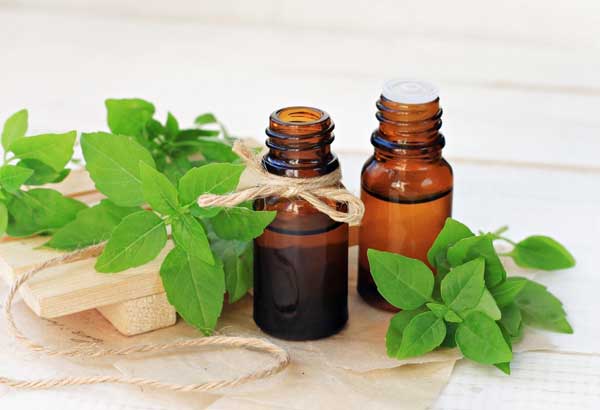The use of essential oils and aromatherapy to address canine health problems begins to gain recognition as a safe and effective treatment. Still, many people including dog owners are often misguided about aromatherapy. Some of them think that aromatherapy is all about using scented candles or using grooming products with scented oils.
Take note that aromatherapy is beyond improving the smell of your dog.

By Anna Ok / shutterstock.com
Pure essential oils have medicinal properties and if used properly, they can work effectively in treating the different health problems affecting your dog – from motion sickness to specific behavioral problems such as hyperactivity. You can also blend different essential oils to achieve specific results.
Proper Use of Essential Oils
More often than not, the most direct application of essential oil on canine skin is the most effective. In some instances, it’s basically the scent itself from the essential oils that can provide the most powerful effect.
Before applying pure essential oil to the skin of your dog, be sure to check first to make certain that the one you are using is safe to use. Typically, essential oils must be blended first with a carrier agent before using.
It is safe to use essential oils for dogs, but you should dilute them before using them. When used properly, you can use essential oils to address the most common health problems affecting your dog. You can use the essential oils when massaging your pet’s skin. It is recommended to use it an area of the skin with less hair.
For instance, you can massage the paws of your dog using the oil blend. Other suitable regions are ear tips and spine. You can also use an aromatherapy diffuser in a room at least once a day and allow your dog to stay in the air.
Another method is to use a mist to spray nearby areas where the dog is staying. However, you must always be careful not to spray or apply essential oils near the eyes or the genitals.
Edible oils can also be added to dog food.
Most dogs will develop arthritis once they grow older. There are even cases when owners choose to euthanize their dogs so they will not suffer from pain. The good news is that with essential oils, an old dog can still enjoy a more comfortable life.
How to Choose Essential Oils
It is crucial to use high-quality essential oils. They should be 100% pure to be effective. It is also advisable to choose an oil based on its intended purpose. Do you want it to calm your dog or do you need something to help your pet in indigestion?
It is not wise to treat this e-book as your only source of information on essential oils and aromatherapy. It is highly recommended to be proactive in doing research and talking with your veterinarian.
Make sure to spend time studying each essential oil and the method of application.
There are examples in this e-book, but it is essential to prepare the oils properly. Also, consider your pet’s reactions, and observe carefully for adverse effects.
How to Choose the Right Method of Applying Essential Oil
The method of application you choose relies on the expected effect and the chosen essential oil. For instance, some essential oils may irritate the skin because of their components. These oils must be diluted or could be better used through inhalation.
After selecting and buying an essential oil, take note that the method of application will depend on the specific condition you want to cure. For instance, wound care usually involves topical applications. Calming effects should be administered through topical applications or inhalation, but for faster effect, inhalation is preferred. Meanwhile, baths involve both topical absorption and inhalation. If you are unsure about the type of application method to use, it is advisable to consult a vet- erinarian who has knowledge in aromatherapy.
How to Prepare Essential Oils for Inhalation
Essential oils can be inhaled through different methods and devices such as dry evaporation, diffuser, steam, and spray.
In dry evaporation, several drops of essential oil are absorbed by tissue or cot-ton ball, and the essence is allowed to evaporate in the air. You can place the cot-ton balls near the place where your pet is sleeping or staying.
Essential oils are also added in a diffuser, usually with water and heat.
Be sureto read the directions of the diffuser device so you can use the essential oil prop-erly. Some types of diffusers come with a timer for more convenience. Take note that essential oils must not be burned as the chemical component of the essential oil may substantially transform through direct burning.
Through the process of steaming, drops of oil are added to steaming water thatimmediately vaporizes. Take note that this method is very direct and even a fewdrops of essential oil can overwhelm your senses.
Don’t overdo steaming as it may hurt the eyes of your pet.
In spraying, several drops of essential oils are mixed in a water-based solution, shaken, and then sprayed into the air to set a mood or to improve the room. A good example is spraying a water-based solution of lavender, not only to enhance the odor of the room, but also to calm your pet. Be sure to shake the bottle first be-fore spraying so that you can spray also the solution and not just the water.
